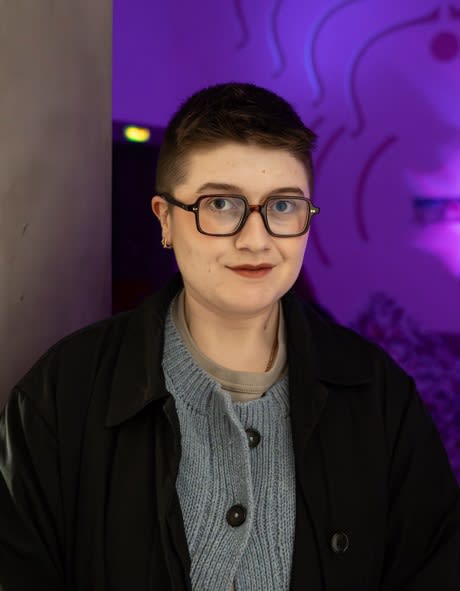"Things I make sometimes uncover subconscious feelings and when the viewer recognises something in the work, it suddenly expands to become more than my relationship to art-making."
Tara's Instagram: @tarawhite.co.uk
How and when did you know you wanted to be an artist?
I don’t recall there being one moment when I decided to pursue art. I’ve always always been drawn to art as something that can be done privately or with and for others. I use art as an intuitive language, offering scope to express our nervous systems and the intensity with which we experience the world. Things I make sometimes uncover subconscious feelings and when the viewer recognises something in the work, it suddenly expands to become more than my relationship to art-making. Art can be a space to reflect/disrupt precarious social conditions and examine constructions of ‘the self’.
What was your experience of art school?
I graduated from BA Fine Art at Goldsmiths in 2019. I was able to interrogate new methods of making and manufacturing, working a lot with casting and textiles. During my second year, Goldsmiths Anti-Racist Action occupied the town hall, and in the same year I joined A Particular Reality, a collective of art department students, staff and alumni with a commitment to building creative learning environments upon the values of equity and care. It was critical time spent sharing space, conversation and food with people, discussing our interests, frustrations and what moved us. A Particular Reality is a vital and dynamic group that continues to operate, fuelled by graft, love and care for equitable and welcoming education.
Can you tell us more about the ideas and inspiration behind your work?
Baba and Me hones in on a small moment within a personal family photograph of my grandfather holding my hand. The upscaled image grants anonymity, whilst revealing rich colours forming a painterly surface that is almost velvet-like. The soft-focused warm tones bleed into one another, likening it to a hazy memory. I was drawn to make the work shortly after my grandfather’s passing, when I began to think of the politics of memory and methods of immortalising them. The work tenderly maps the entangled dynamics between grief, intergenerational relationships and home. Operating in the overlaps between these frames of experience, this work serves as a micro-memorial, welcoming all those who've experienced loss to reflect on what it means to feel at home, beyond space and time. It’s one of the first works I ever decided to frame, referencing a protective case or 'emergency break glass' unit.
Are there other artists or movements that have inspired your work?
At the moment, I think a lot about the work of Diego Marcon and Naneh Hassan. Their work is visually very different, but both deal with narrative to varying degrees. Marcon’s film Dolle is almost an anti-story, it loops seamlessly without conclusion. Naneh Hassan’s paintings are steeped in generational experiences, folklore and emotion. Both allow me to reflect on how a viewer can be guided.
I’m drawn to material texture, I collect objects and whilst sculpture and images are often at the forefront of that interest, some of the work I’ve done designing/making sets and scenery for film and theatre has triggered the desire to test unresolved questions about the formal and conceptual qualities of touch and texture. How can touch be felt through a screen, sound or words? How could it convey the sensuality/richness of a spectrum of textures? How can I sculpt without using physical materials?
Can you describe a typical day in the studio? How do you approach your work?
Trans-itionary-itory-itional.
I’m working to develop a more adaptive practice. As well as being an artist, I’m also an art-worker, so generally my days vary. Art-work(ing) can take place anywhere throughout the day. My studio is sometimes a train, a library, a workshop (like Blackhorse Workshop for example), a collaborator's studio, or home. Day-to-day I’ll work on multiple projects simultaneously, so I like time in the park to break up the week, it’s a bit of a reset. Looking and listening are necessary catalysts for me. Birds are sculptors and engineers, carefully selecting and processing material for their nests. They’re the original world-builders, so observing these fleeting moments feels like being privy to a secret.
